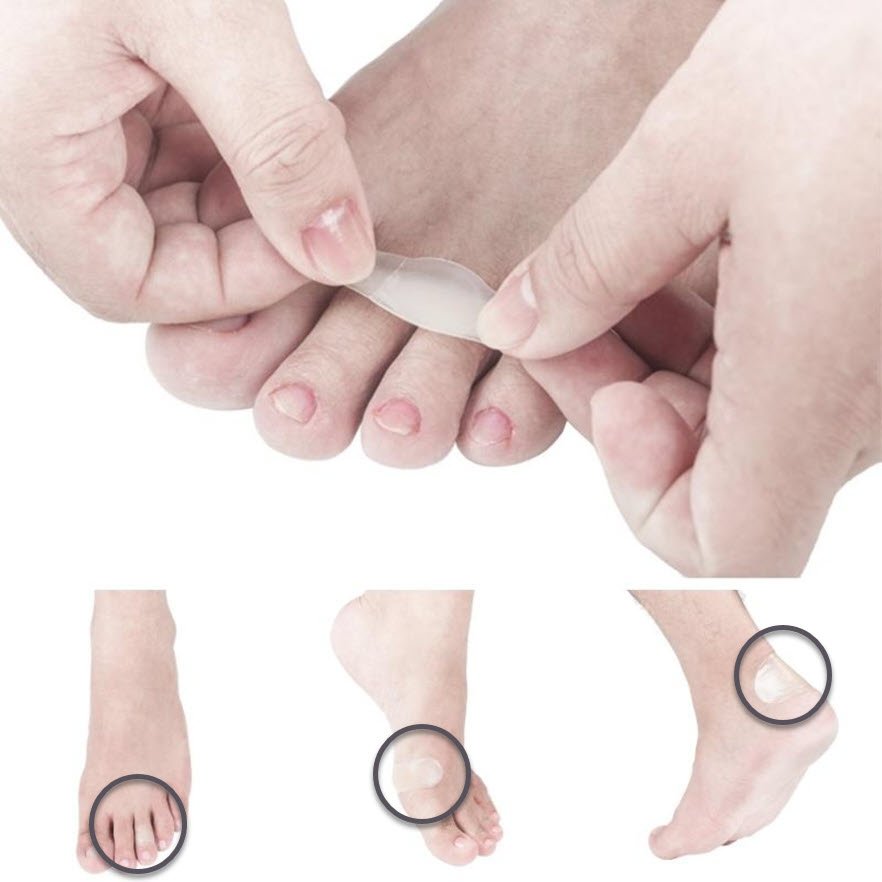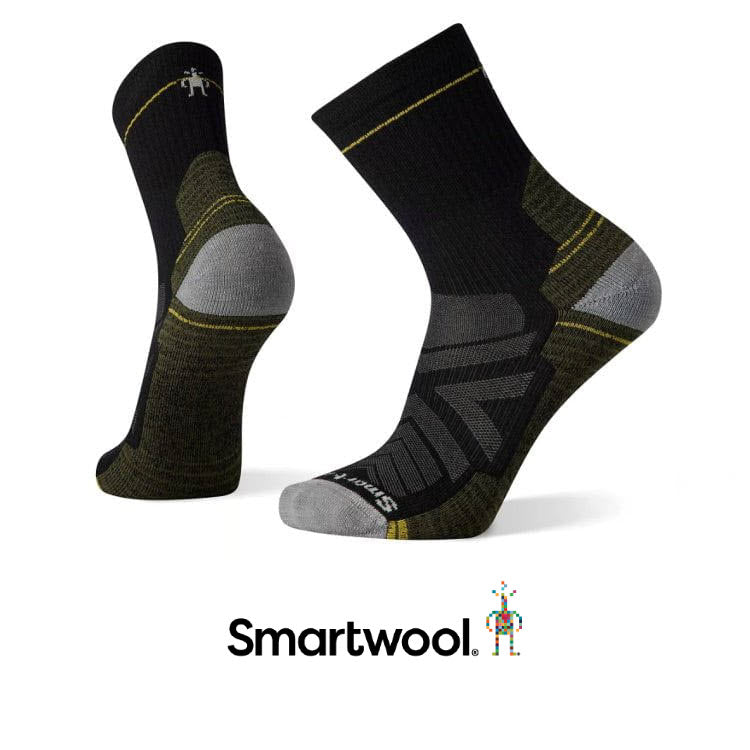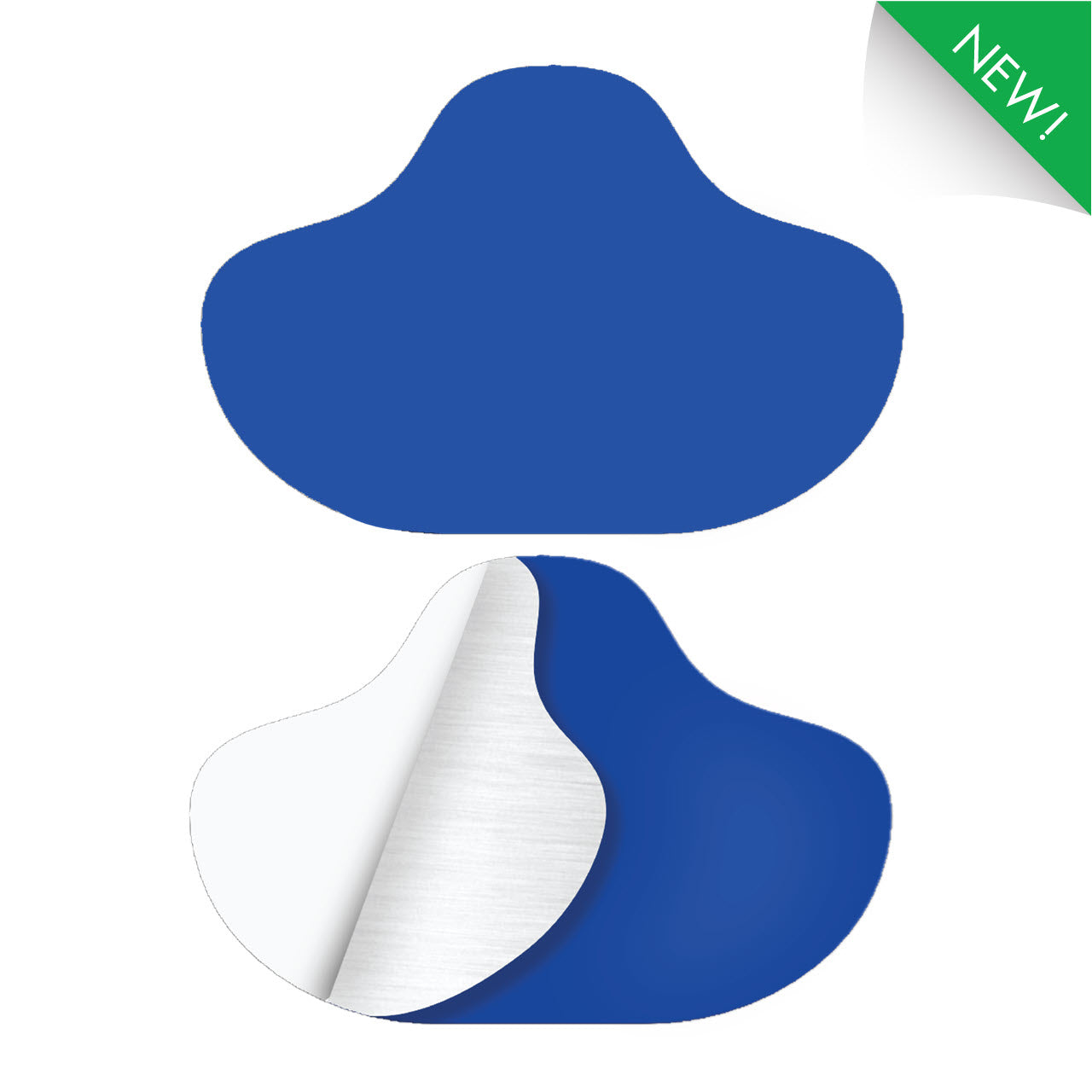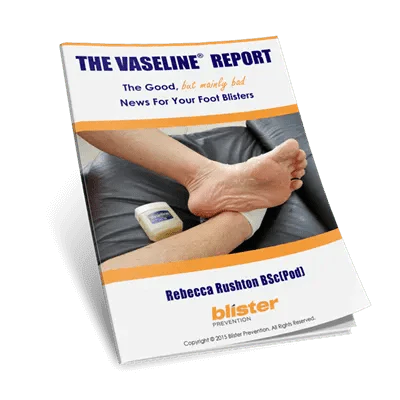Hydrocolloid blister plasters, like Compeed, Duoderm and our own BlisterPod brand, are used to speed up the healing of raw, mildly weepy skin wounds - like deroofed blisters. But how exactly do you use them to maximum effect? This article walks you through some of the finer details of hydrocolloid usage for foot blisters.
Let's start at an unlikely beginning - when you remove your plaster.
Hydrocolloid Blister Plaster Usage FAQ
Q1: How do I take my plaster off?
A: Grab one end and pull it parallel with the skin surface - like it’s an elastic band and you’re trying to stretch it out as long as it can get.
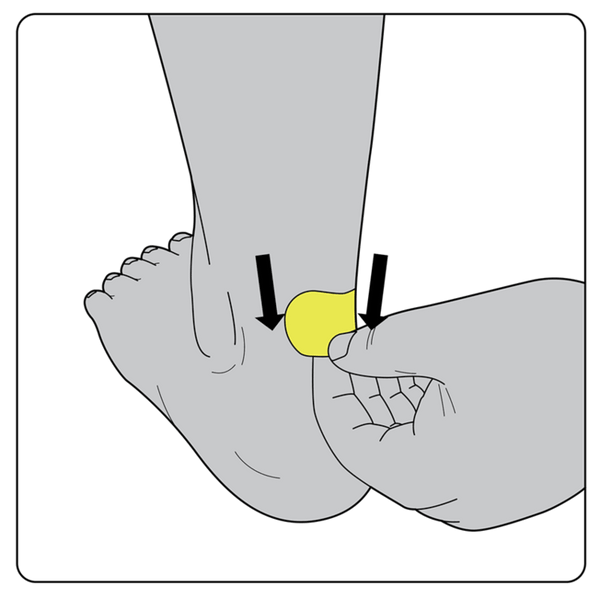
To remove, loosen one edge and pull the plaster parallel to the skin surface - like you’re trying to elongate it.
Q2: Why does my blister smell bad?
A: When you remove your hydrocolloid blister plaster and your blister hasn't healed yet, your blister will look gooey. And it will smell. This is completely normal. It’s simply the combination of hydrocolloid particles and your wound fluids. This combination is what helps your skin heal optimally. Just wipe the goo off with a cotton bud or gauze (preferably sterile of course), apply a bit of antiseptic (eg: povidone iodine or Betadine) and put a new plaster on once the surrounding skin is dry.
Q3: How will I know if my blister really is infected?
A: The white gel will be more of a yellow (or green) colour. This is actually pus, not simple blister fluid. Pus indicates infection. Another sign of infection is redness around the edges of your blister. Please read this important article about infected blisters - what they look like and what to do about it. There are some good pictures to help you identify infection. Basically, apply antiseptic and use island dressings instead of hydrocolloid blister plsaters for a few days until the pus and redness goes away. If your blister doesn’t appear to be getting better, seek medical advice. And if you see red streaks extending from your blister up your foot or leg, you need medical attention to fight that infection, probably in the form of oral antibiotics (tablets).
Q4: Why is the skin around my blister white and wrinkly?
A: This is maceration. Macerated skin is skin that has absorbed too much water. It is weakened skin and it doesn't help healing. Maceration will occur to the skin around your blister if your blister is too weepy and you've left your hydrocolloid blister plaster on for too long. Remember, as soon as the white gel bubble reaches the edge of your plaster, it's time to replace it.
If you find macerated skin when you remove your plaster, use an island dressing instead. Change it frequently so you don't have a soggy dressing on for any length of time. How frequently? It depends, but 2-4 times a day would be a good starting point.
Q5: How weepy is too weepy for a hydrocolloid blister plaster?
A: Hydrocolloids are used to facilitate healing of mildly weepy wounds. If you’re having to change your hydrocolloid bandage within 24 hours, it’s too weepy to benefit from the healing powers of a hydrocolloid. Use an island dressing instead, until the weeping slows down a bit.
Q6: What would cause my blister to be too weepy for a hydrocolloid?
A: A few things:
- Your blister is very large and deep - In this case, it's no longer a blister, it's an erosion. See your doctor or wound care professional.
- Your skin is bleeding - This isn't a blister either, it's a deeper injury. Use a simple island dressing instead.
- You haven’t nullified the blister-causing forces.
I see the latter at the 6-day ultramarathon races I attend. Runners get a deroofed blister and put a hydrocolloid blister plaster on it, thinking that's all they need to do, and keep running. If it was the end of the race, it would be perfectly fine. But the repetitive pounding continues and they've done nothing to reduce friction levels, pressure or the movement of the bones. In these situations, it’s better to use island dressings, changing them frequently (2-4 times per day), until the blister starts to weep less. At this point, you can speed healing up and benefit from the way hydrocolloids work.
Q7: Where can I buy BlisterPod Hydrocolloid Blister Plasters?
A: Our hydrocolloid plasters are only available from our online store. We ship daily worldwide from USA and Australia.
More Tips On Using Hydrocolloid Blister Plasters
There is some great information on the following pages:
How To Use A Hydrocolloid Dressing… Properly!
Hydrocolloid Healing: That White Gel Bubble
New & Improved Hydrocolloid Bandages For Foot Blisters
Get Started With Hydrocolloids
Give your deroofed blisters the advanced treatment they deserve with hydrocolloids. Grab a 6-Pack of BlisterPod Hydrocolloid Blister Bandages.
